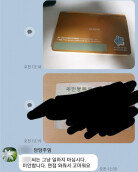Koreas Economic Indicators Falling
Before experiencing a proper economic recovery, there are signs here and there that suggest the economy may turn to the downside. On top of worsening external factors such as soaring oil prices, a stronger local currency and moves for a global tightening, the rate of domestic consumption and facility investment has also declined, turning the possibility of a slowing economy into reality.
According to the April Industrial Activity Trend report that the National Statistical Office released on May 29, the economic outlook indicator for the economy in five to 12 months has been declining for three consecutive months. The coincident indexs cycle variation value, which best shows the current economic situation, was 0.5 point lower than March.
Negative economic indicators have followed one after another, after the Bank of Korea announced on May 26 that Aprils on-month current account deficit reached its greatest amount in nine years, at 1.53 billion dollars. After hitting 100.8 in January, the coincident indexs cycle variation value has shown a clear downtrend with numbers slipping to 100.5 (-0.3) in February, 100.5 (0) in March and 100.00 (-0.5) in April. This is because the industrial production index in April dropped 1.5% from March due to a decline in car, mobile phone and ship production, as well as the fact that the average working ratio of factories also fell to 79.1% in April, 2.4% points lower than the previous month.
But what is more concerning is the leading economic indicator, which showed a sharpening downtrend in the last three months, with numbers falling 0.4% in February, 0.5% in March and 0.7% in April. If the leading indicator declines for about 3 months, there is more than a 50% chance of the actual economy turning to the downside, said Oh Mun-seok, an economic research group leader at LG Economic Research Institute. The economys upward trend is coming to an early finish, he added. The economic recovery which started in May last year came to an end in January this year, lasting just eight months. The period for a rise in the economy was about an average of 33 months before the economic crisis, but in the new millennium, the terms have turned shorter.
The economic upward trend in July of 2001 lasted 17 months to December of 2002, while the upturn that started in July of 2003 lasted seven months until February of 2004. Private economic research institutes such as Samsung, LG and Hyundai have all set an outlook that, after reaching its peak, the economic growth rate will fall to about 3% level in the fourth quarter (October to December). The Ministry of Finance and Economy revealed that its top priority is to keep the consumer consumption level as stable as possible to continue economic recovery, but even that does not look easy.
Hyun-Jin Park witness@donga.com







